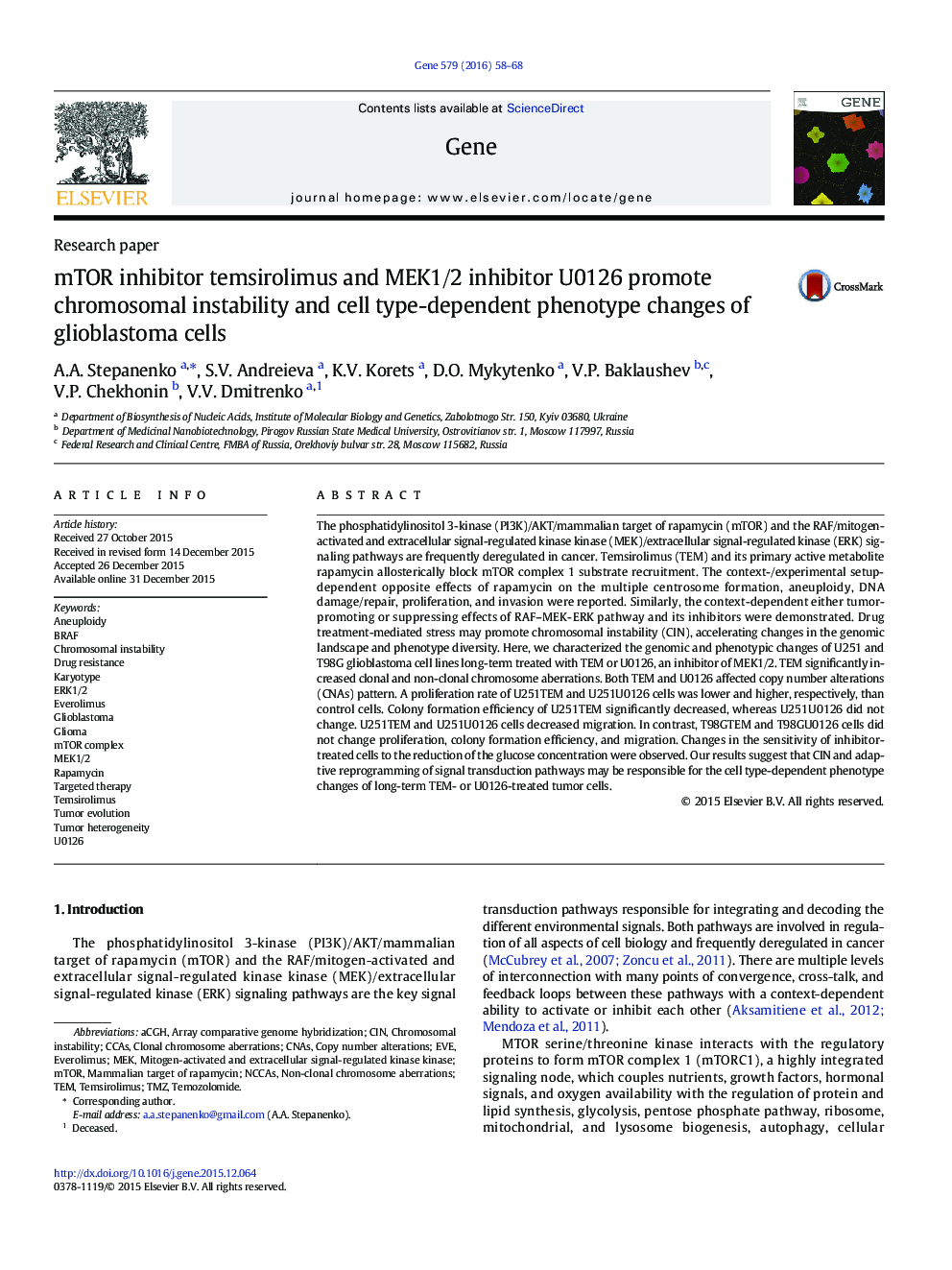| کد مقاله | کد نشریه | سال انتشار | مقاله انگلیسی | نسخه تمام متن |
|---|---|---|---|---|
| 2815285 | 1159863 | 2016 | 11 صفحه PDF | دانلود رایگان |

• Temsirolimus treatment increased clonal and non-clonal chromosome aberrations.
• Temsirolimus and U0126 treatment affected copy number alterations (CNAs) pattern.
• Temsirolimus affected phenotype of glioma cells in a cell type-dependent manner.
• A proliferation rate of U0126-treated U251 cells was significantly increased.
• Chromosomal instability may be responsible for the versatile phenotype changes.
The phosphatidylinositol 3-kinase (PI3K)/AKT/mammalian target of rapamycin (mTOR) and the RAF/mitogen-activated and extracellular signal-regulated kinase kinase (MEK)/extracellular signal-regulated kinase (ERK) signaling pathways are frequently deregulated in cancer. Temsirolimus (TEM) and its primary active metabolite rapamycin allosterically block mTOR complex 1 substrate recruitment. The context-/experimental setup-dependent opposite effects of rapamycin on the multiple centrosome formation, aneuploidy, DNA damage/repair, proliferation, and invasion were reported. Similarly, the context-dependent either tumor-promoting or suppressing effects of RAF–MEK-ERK pathway and its inhibitors were demonstrated. Drug treatment-mediated stress may promote chromosomal instability (CIN), accelerating changes in the genomic landscape and phenotype diversity. Here, we characterized the genomic and phenotypic changes of U251 and T98G glioblastoma cell lines long-term treated with TEM or U0126, an inhibitor of MEK1/2. TEM significantly increased clonal and non-clonal chromosome aberrations. Both TEM and U0126 affected copy number alterations (CNAs) pattern. A proliferation rate of U251TEM and U251U0126 cells was lower and higher, respectively, than control cells. Colony formation efficiency of U251TEM significantly decreased, whereas U251U0126 did not change. U251TEM and U251U0126 cells decreased migration. In contrast, T98GTEM and T98GU0126 cells did not change proliferation, colony formation efficiency, and migration. Changes in the sensitivity of inhibitor-treated cells to the reduction of the glucose concentration were observed. Our results suggest that CIN and adaptive reprogramming of signal transduction pathways may be responsible for the cell type-dependent phenotype changes of long-term TEM- or U0126-treated tumor cells.
Journal: Gene - Volume 579, Issue 1, 15 March 2016, Pages 58–68